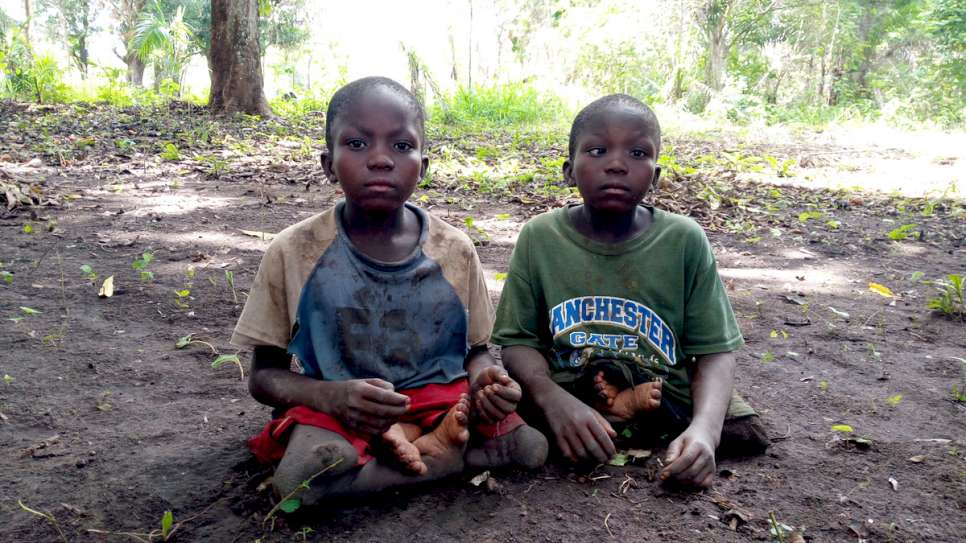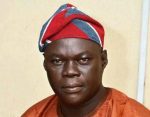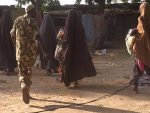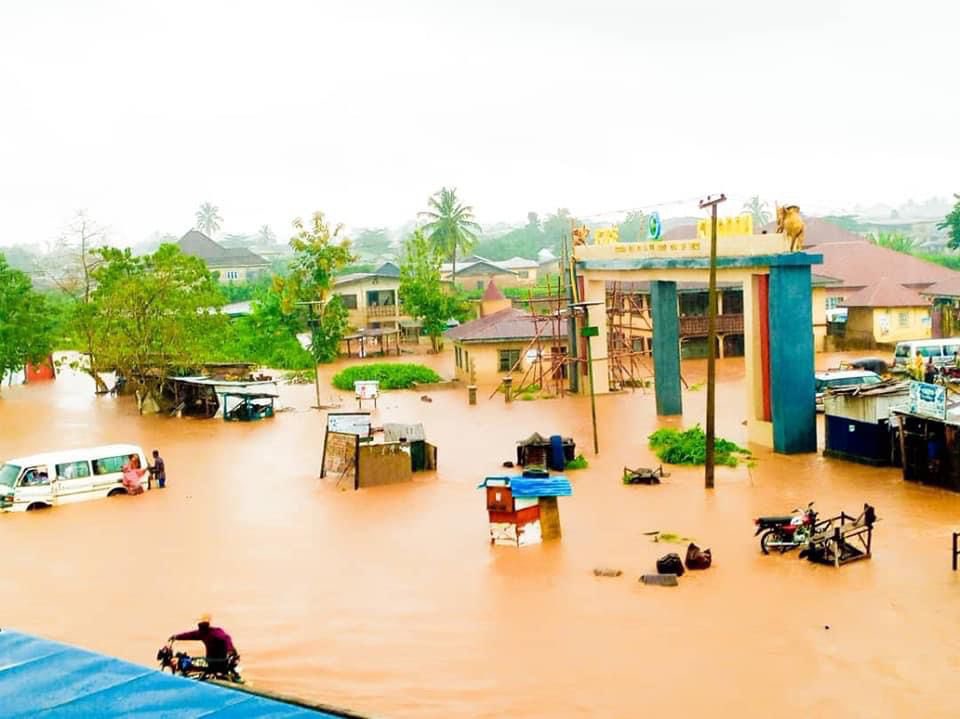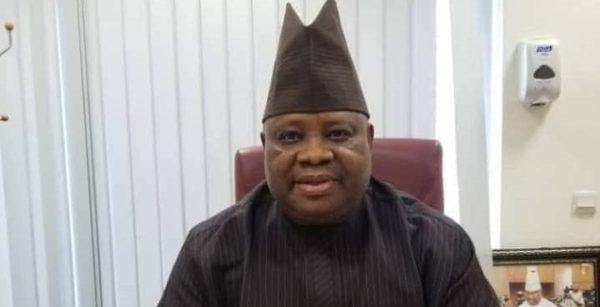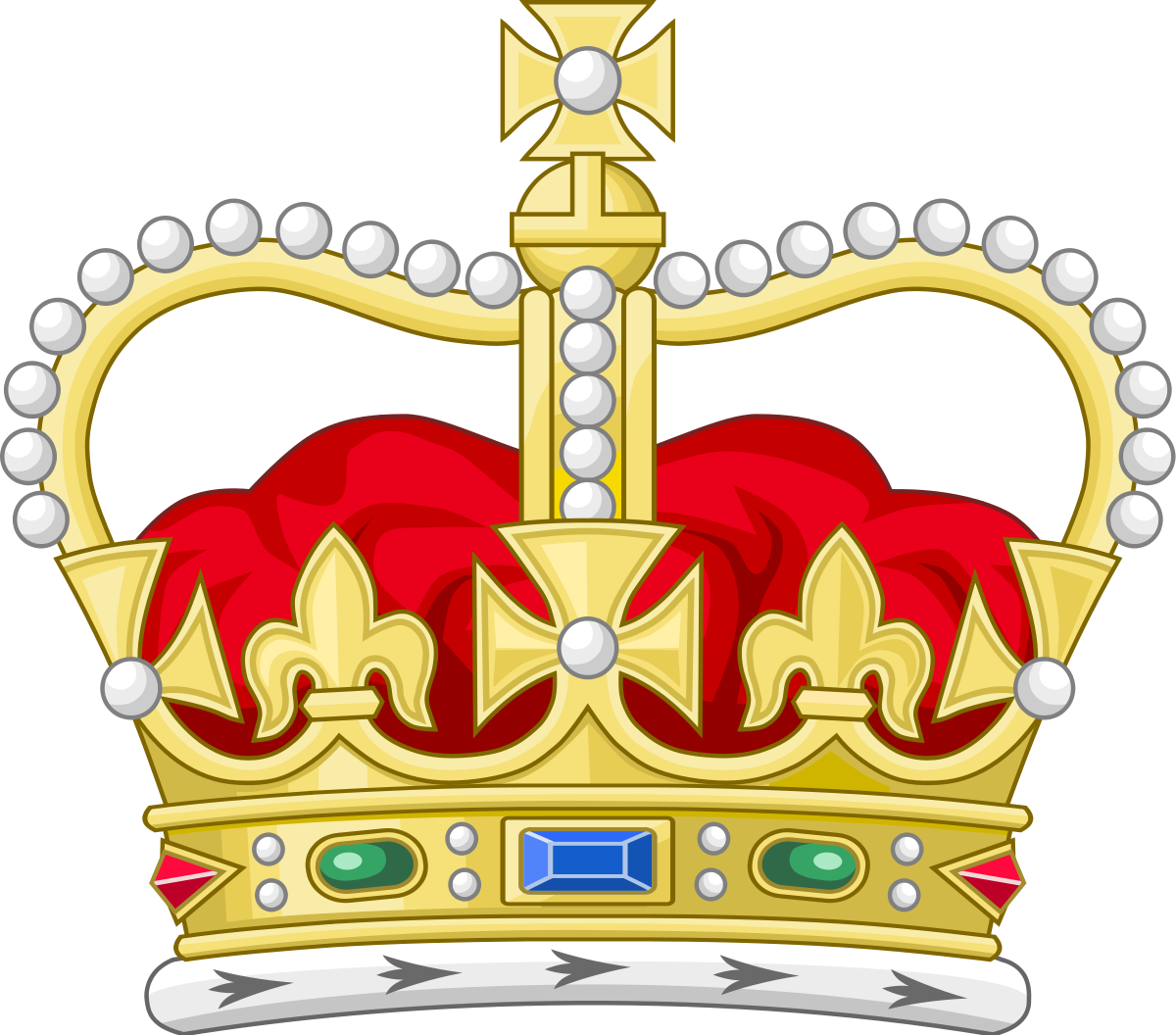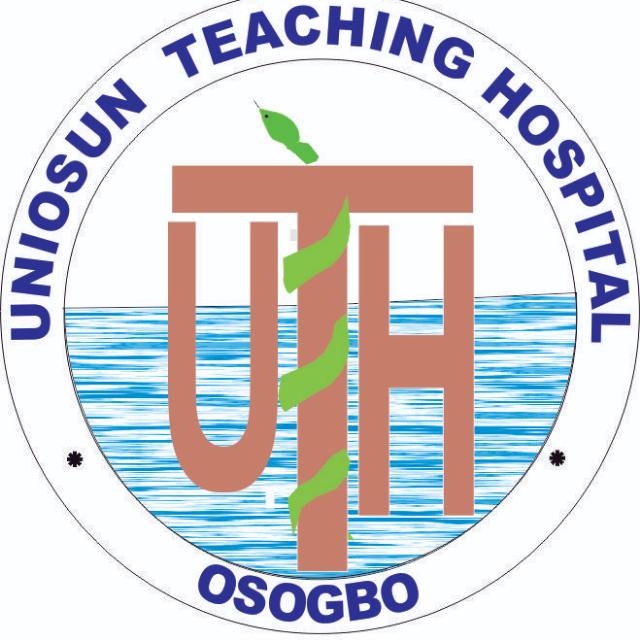By Olowogboyega Oyebade
Do you know that fictions have a way of launching reality? Are you aware that when Edward Hale was writing a short fiction titled “The Brick Moon” depicting a satellite being launched into orbit, every discerning mind then must have taken him to be in delusion? Are you aware that when Jules Verne published “The Begum’s Fortune” in 1879, romanticizing the launch of an object from earth to space, the world must have thought he was joking? Do you know that when Konstantin Tsiolkovsky (1857–1935) published his book “Exploring Space Using Jet Propulsion Devices”, in 1903 in Soviet Russia, the world must have taken him for ‘Baba Sala’, a comedian of the first order? Are you aware that when Herman Potocnik (1892–1929) published “The Problem of Space Travel – The Rocket Motor” In 1928, describing how orbiting spacecraft could be used for scientificexperiments, the entire world must have yelled?
Do you know that when in 1945, Arthur Clarke (1917–2008) described in details the possible use of communications satellites for mass communications in a published article titled “Wireless World”, a science fiction, the world must have taken him to be another biblical ‘Joseph, the dreamer’? Do you know that the world did not realise on time that they were another set of Nostradamus, the man that could see tomorrow? Today, the reality has dawned on us. What is this reality? You care for more? Enjoy this time-out.
Hurray! Do you know that on 4 October 1957, the Soviet Russia took the world by surprise by launching the world’s first artificial satellite, Sputnik 1 into space with Sergei Korolev as chief designer? Do you know that this feat nearly caused a major stir in the United States, its rival? Are you aware that as the dust of the debates generated by this launch was settling down, Soviet Russia launched again Sputnik 2 on 3 November 1957, a satellite that carried the first living passenger into orbit, a dog named’Laika‘? Do you know that out of cold war suspicion and publicpressure, the community of scientists in the United States had to launch Explorer 1 as their first artificial satellite on 31 January 1958, and followed with the launch of some other artificial satellites? Do you know that as at the last count, about 8,100 satellites from more than 40 countries had been launched into space? Do you know that, according to a 2018 estimate, about 4,900 artificial satellites are currently in orbit and only about 1,900 are operational while the rest had expired? What do satellites do? You care? Come along, please.
Do you know that satellites are used to make maps of planetary surfaces for scientific studies? Have you not wondered how the United States was able to record the recent attacks on two oil tankers in the Gulf allegedly masterminded by Iran? Are you aware that the United States Space Surveillance Network (SSN), a division of the US Strategic Command, has been tracking objects in Earth’s orbit since 1957 when the Soviet Russia opened the Space Age with the launch of Sputnik I and since then, has tracked more than 26,000 objects and that it currently tracks more than 8,000-man-made orbiting objects? Do you know that Iran is now put at the strictest proof to deny the recent attacks in the Gulf? Do you know that there are civilian earth observation satellites, communications, navigation, weather satellites, and space telescopes? doing usually semi-independent computer-controlled systems? Do you know that there are three basic categories of non-military satellite services? You care to know them? Come along, please.
The three categories of non-military satellite services are: Fixed satellite services, Mobile satellite systems and Scientific commercial and noncommercial research satellites. Do you know that we use fixed satellite services to handle hundreds of billions of voice, data, and video transmission tasks across all countries and continents, connecting remote regions, vehicles, ships, people and aircraft to other parts of the world and/or other mobile or stationary communications units, in addition to serving as navigation systems in all air and sea ports? Do you know that research satellites are of different types? You care? Come along.
Do you know that we have satellites on Astronomy to monitor planets, galaxies, and other outer space objects? Do you know that we have Bio-satellites designed to probe into scientific experimentations and Communication satellites telecommunications and broadcasting? Do you know that navigational satellites use radio time signals transmitted to enable mobile receivers on the ground to determine their exact locations? Are you aware that we have killer satellites that are designed to destroy enemy warheads, satellites, and other space assets? Do you know that we have reconnaissance satellites deployed for intelligence? Do you know that we have recovery satellites that provide a recovery of reconnaissance, biological, space-production and other payloads from orbit to Earth? Do you know that there is space-based solar power satellites that are now proposed to collect energy from sunlight and transmit it for use on Earth or other places? Do you know that there are Space stations that are artificial orbital structures that are designed for human beings to live on in outer space stations designed for medium-term living in orbit, for periods of weeks, months, or even years? Do you know that we now have spaceships that are large satellites that are able to put humans into (and beyond) an orbit, and return them to Earth as tourism? Do you know that as other nations are launching satellites into orbit, Nigeria did, too? Enjoy this time-out.
Do you know that Nigeria has the National Space Research and Development Agency (NASRDA), a part of the Federal Ministry of Science and Technology? Do you know that it was established on 1 August 2001 to focus on research, education, engineering, design and manufacture, instrumentation, rocketry, satellite data acquisition, processing, analysis and management of related software? Are you aware that five satellites have been launched by Nigeria into space? They are: Nigeriasat-1, NigeriaSat-2, NigComSat-1, NigComSat-1R and an improved NigComSat-1R. Do you know that the NigeriaSat-1 was the first Nigerian satellite and built by a United Kingdom-based satellite technology company, with $30 million and launched by Kosmos-3M rocket from Russian PlesetskSpaceport on 27 September 2003? Do you know that the purposes of the satellite were: to give early warning signals of environmental disaster; to help detect and control desertification in the northern part of Nigeria; to assist in demographic planning; to establish the relationship between vectors and the environment that breeds malaria and to give early warning signals on future outbreaks of meningitis using remote sensing technology; to provide the technology needed to bring education to all parts of the country through distant learning and to aid in conflict resolution and border disputes by mapping out State and International Borders?
Do you know that NigComSat-1, was the second Nigerian satellite ordered and built in China in 2004? Are you aware that it was Africa’s first communication satellite designed to provide coverage to many parts of Africa and was launched on 13 May 2007, aboard a Chinese Long March 3B carrier rocket, from the Xichang Satellite Launch Centre in China? Do you know that on 11 November 2008, NigComSat-1 failed in orbit after running out of power due to an anomaly in its solar array? Are you aware that on 10 November 2008, the satellite was reportedly switched off for analysis and to avoid a possible collision with other satellites? Do you know that it was repaired and on 11 November, 2008, the satellite eventually failed after losing power putting our investments on it in ruins? Allah Akbar!
Are you aware that NigeriaSat-2 and NigeriaSat-X, were Nigeria’s third and fourth satellites? Do you know that the NigeriaSat-2/X spacecraft was built at a cost of over £35 million and was launched into orbit by Ukrainian Dnepr rocket from a Yasny Military Base in Russia on 17 August 2011? Do you know that on 24 March 2009, the Nigerian Federal Ministry of Science and Technology signed a further contract for the in-orbit delivery of the NigComSat-1R, a communication satellite? Do you know that this fifth satellite, NigComSat-1R was launched by China on Dec. 19, 2011? .
Do you know that on 18th May, 2017, the Director-General of National Space Research and Development Agency (NASRDA), Prof SeiduMohammed, announced to the world that Nigeria, alongside four other countries, (Japan, Ghana, Bangladesh and Nepal), would launch Africa’s first Nano-satellite between 23 May to 27 May, 2017 from the launch base at Miami, Florida, U.S.? Do you know that, according to him, Nigeria, along with other four countries, came together to work in a constellation to build about five nano-satellites to study environmental parameters? Do you know that these are parts of efforts to sustain technology already transferred to Nigerian scientists and engineers with a view to making Nigeria a space power by 2030? Do you know that we are begging China and Ukraine to include a Nigerian Engineer as an astronaut into space between now and 2025? Do you know that we are proposing our own facility to launch satellites before 2030? Prof Seidu Mohammed, cuts in:
“We would be able to complete our Assembling, Integration, Testing and Design before 2018, and by 2022, most of these efforts would begin to crystallize. The large-scale commercialization of space equipment would be possible in our country, and by 2030, we believe that there would be a launching facility from our country.“We believe before 2030, there will be need for Nigeria to be an international space station,”.
Do you know that when satellites reach the end of their mission, an event that happens within 3 or 4 years after launch, operators have to de-orbiting them or move them to a graveyard orbit? Do you know that earlier than now, satellites were rarely designed to be de-orbited? Do you know that all active artificial satellites and spaceships have stepped up their resolutions, and some satellites are now used for space tourism? Do you know Richard Branson, a man pioneer in this field? Come along,
Sir Richard Branson was born on 18 July 1950. He is a British investor, author and philanthropist. He founded the Virgin Group, which controls more than 400 companies. In 2004, he founded Virgin Galactic to promote space tourism. Do you know that on 25 September 2004, Branson announced the signing of a deal under which his new space tourism company, Virgin Galactic, would take paying passengers into suborbital space with tickets priced at US$200,000? Do you know that on 24th January, 2019, Virgin Galactic announced that the company partnered with Under Armour for fabrication of space suits for passengers and pilots of SpaceShip Two? Do you know that passengers who had already submitted their deposit included popular celebrities like Tom Hanks, Brad Pitt, scientist and entrepreneur Alan Finkel, Australian science journalist Wilson da Silva and late Stephen Hawking? Do you know that SpaceShip Two is projected to fly to a height of 110 km, going beyond the defined boundary of space and lengthening the experience of weightlessness for its passengers. Do you know that the spacecraft would reach a top speed of 4000 km/h and passengers will be able to release themselves from their seats to float around the cabin?
Do you know that Virgin Galactic is not the only corporation pursuing suborbital spacecraft for tourism and that another company named Blue Origin is developing suborbital flights with its New Shepard spacecraft? Do you know that there was a successful flight to space on 22 February, 2019 as Virgin Galactic sent three people to space and back, including Beth Moses, the company’s chief astronaut instructor, now the first woman to fly on a commercial spacecraft, in the world? Do you know that the woman is now assisting to prepare Virgin Galactic’s customers for what could be the experience of a lifetime: a journey above the atmosphere, where the sky is dark and Earth’s horizon is curved? Do you know that tickets are selling for US $250,000 each, and so far, 600 people from 58 countries are waiting for their turn to ride? The statement of Beth Moses interludes:
I’ve heard from so many astronauts that if we could just send everybody up to see the planet from space, that it would change the way people interact on Earth, and the things we value, just because the view is so spectacular and seeing the planet as a planet is transformative….I definitely was aware that Earth was a precious and beautiful thing, far below me, and you’re definitely aware of the majesty of the planet.
Do you know that Sir Richard Branson, the man who pioneered space tourism was not judged to amount to much when he was in school because he had dyslexia? Do you know that he had to quit schooling at the age of 16 years when he could not cope? Do you know that on his last day at school, his headmaster, Robert Drayson, told him he would either end up in prison or become a millionaire? Do you know what is dyslexia? You care for it? Come along, please.
Dyslexia is a reading disorder. “ The National Institute of Neurological Disorders and Stroke” describes dyslexia as “difficulty with phonological processing (the manipulation of sounds), spelling, and/or rapid visual-verbal responding”. The British Dyslexia Association describes dyslexia as “a learning difficulty that primarily affects the skills involved in accurate and fluent word reading and spelling” and is characterized by “difficulties in phonological awareness, verbal memory and verbal processing speed”. Types of Dyslexia include pure alexia, surface dyslexia, semantic dyslexia, phonological dyslexia, and deep dyslexia. It is characterized by trouble with reading despite normal intelligence. Different people are affected to varying degrees. Problems may include difficulties in spelling words and understanding what one reads. Do you know that Dyslexia is believed to be caused by both genetic and environmental factors? Do you know that some cases run in families, occurring in boys and girls with attention deficit hyperactivity disorder (ADHD) and is associated with similar difficulties with numbers? Do you know that it may begin in adulthood as the result of a traumatic brain injury, stroke, or dementia, altering mechanisms of the brain’s language processing?
Do you know that modern neuro-imaging techniques such as functional magnetic resonance imaging (fMRI) and positron emission tomography (PET) have shown a correlation between both functional and structural differences in the brains of children with reading difficulties? Do you know that some dyslexics show less electrical activation in parts of the left hemisphere of the brain involved with reading, a syndrome that makes school academic activities things to endure than things to enjoy? Do you know that research into potential genetic causes of dyslexia has its roots in post-autopsy examination of the brains of people with dyslexia, showing observed anatomical differences in the language centres of such brains? Do you know that despite the fact that Richard Branson had this disorder, early diagnosis had to make him to stop schooling at age 16 to follow another profitable cause of life? Do you know that today, he has over 400 successful companies? Do you know that he has pioneered so many new things in our world including commercial tourism to space?
Imagine that he was not given the second chance by his country to follow what his intelligence could cope with when he was growing up? How could he have reached this alpine height of assisting the world to pioneer the use of space shuttle for tourism? Imagine that he had dropped out, unassisted like millions of out of school children roaming about the streets in Nigeria? Could he have amounted to much today in the world? Do you know that, giving opportunities, there are millions of professor that we will never have among these millions of out of school children in all our streets wasting away in fleeting years? Yes! Do you know that Phillip Emeagwali was once a street child, awheel-barrow pusher at Oba Adesida Market in Akure here in Nigeria? Who is Phillip Emeagwali? Come along!
Do you know that Philip Emeagwali was born on 23 August 1954 in Akure, Ondo State, Nigeria? Do you know that his early schooling was suspended in 1967 as a result of the Nigerian Civil War? Do uouknow that as a elementary school pupil, he was pushing wheel-barrow at Oba Adesida Market in Akure? Do you know that at 13 years, as a street child, he served in the Biafran army and had to complete high-school on self-study after the war? Do you know that share providence of a scholarship got him into the United States where he enlisted into Universities to pursue what he cherished? Do you know that after school, he received the 1989 Gordon Bell Prize for a signature, cutting edge computer application adjudged to be useful for computational fluid dynamics for oil-reservoir modeling? Do you know that he was once cited by President Bill Clinton as an example of what Nigerians could achieve when given the opportunity? Do you know that he has been ranked as one of the 35th-greatest Africans and rated greatest African scientist of all time? Do you know that he is rated as one of the ten most -celebrated scientists on postage stamps, tone of the ten most-celebrated fathers of the computer on postage stamps, one of the ten most-celebrated Mathematicians on postage stamps, tone of the ten most-celebrated Physicists on postage stamps, one of the ten most-celebrated black inventors on postage stamps, one of the ten most-celebrated scientists on currencies , tone of the ten most-googled-fathers of the computer ? Do you know that Philip Emeagwali ranked as: smarter than Einstein, the Second greatest genius in Mathematics, the third greatest genius alive, the most voted “Father of the Modern Computer”, ranked First by Google for “contribution to the development of the computer”, ranked as one of the few 23 geniuses with photographic memory in the world, one of the 99 greatest Mathematicians since antiquity, one of the nine refugees that made a difference in the United States, one of the top five Nigerian role models, one of the 7 most respected Nigerians and one of the top 10 Igbo legends that have put the ethnic group on the world map? Imagine that he was not discovered among the crowd of street children? How would you feel?
Do you know that Nigeria is not ranked by the world by the number of satellites bought and “ launched” into space? How can we earn the respect of those who made that technology available to us? for us? No way! Do you know that our country is ranked by the number of street children that are out of school? Do you know that the National Universal Basic Education has declared that we have about 13.5 million out of school children in Nigeria? Have you wondered about how many Phillip Emegwali are among these smart ballistics that may imperil our collective future if they are left without due diligence of care? Do you know that these street children defining us have rights? You care to know? Come along, please.
The United Nations Convention on the Rights of the Child is a human rights treaty which sets out the civil, political, economic, social, health and cultural rights of children. The UN General Assembly adopted the Convention and opened it for signature on 20 November 1989 and came into force on 2 September 1990, after it was ratified by the required number of nations. Currently, 196 countries are party to it, including every member of the United Nations except the United States. Two optional protocols were adopted on 25 May 2000. The First Optional Protocol restricts the involvement of children in military conflicts, and the Second Optional Protocol prohibits the sale of children, child prostitution and child pornography. Both protocols have been ratified by more than 160 states. A third optional protocol relating to communication of complaints was adopted in December 2011 and opened for signature on 28 February 2012. It came into effect on 14 April 2014. The Convention deals with the child-specific needs and rights. It requires that the “nations that ratify this convention are bound to it by international law”. The Convention obliges States to allow parents to exercise their parental responsibilities. The Convention also acknowledges that children have the right to express their opinions and to have those opinions heard and acted upon when appropriate, to be protected from abuse or exploitation, and to have their privacy protected, and it requires that their lives not be subject to excessive interference.
The Convention also obliges signatory States to provide separate legal representation for a child in any judicial dispute concerning their care and asks that the child’s viewpoint be heard in such cases. The Convention forbids capital punishment for children. Article 19 of the Convention states that State parties must “take all appropriate legislative, administrative, social and educational measures to protect the child from all forms of physical or mental violence”
In 2003, Nigeria adopted the Child Rights Act to domesticate the Convention on the Rights of the Child. The Children’s Rights Act 2003 (CRA) to integrate children-focused legislation into one comprehensive law. The United Nations Children Education Fund (UNICEF) listed the States that had yet to domesticate the CRA as Adamawa, Bauchi, Borno Enugu, Gombe, Kaduna, Kano, Katsina, Kebbi ,Sokoto, Yobe and Zamfara States respectively. Ironically, most of these States are where children are exposed to the activities of terror groups where they are taught how to bomb soft and hard targets with devastating payloads. . Do you know that Child Rights Law was signed into Law in October 2008 in the State of Osun by Governor Olagunsoye Oyinlola? Do you know that Osun has stepped it up through the last administration of Ogbeni Rauf Aregbesola by inaugurating Family Court Assessors to defend the rights of children?
Do you know that failure to domesticate this law in various States in Nigeria has continued to expose children to untold hardships, abuses, trafficking, lack of education, child labour, banditry, hooliganism, drugabuse and a whole lot of other negative tendencies? Do you know that millions of under-age children are now roaming our streets in wasted years? Do you know that these children are exposed to all forms of abuses by predators, paedophiles, human trafficking agents, organ-harvesters ritualists, sentencing them to untimely deaths?
Do you know that poverty has been identified as the greatest barrier to education and that in Nigeria, two-thirds of children in the poorest households are not in school and almost 90 per cent of them will probably never enroll? Do you know that Nigeria will be failing in her duty to lead Africa by example if she continues to play down on the right of the child as exemplified by the plight of children in Internally Displaced Persons (IDPs) camps? Who will safe the Phillip Emeagwali in all the IDP camps across Nigeria? Which State will discover Richard Branson among these children to show them light to discover where they are and who they are? Do you know that it is a collective responsibility of all of us?
Do you know that UBEC has declared in its 4thOctober, 2018 statement that there are 13.2 million out of school children in Nigeria now rising from 10.5 million of them in 2015? Do you know this staggering 13.2 million out-of school children is the largest concentration of such children in any country in the world? Do you know that Nigeria accounts for more than one in five out-of-school children and 45 percent of out-of-school children in West Africa? Do you know that we have 366, 667 out of school children in every State in Nigeria? Comrades! This is our satellite in space. The voice of the Education Chief, UNICEF, Terry Durnnian, cuts in:
“The number of out of school children calls for serious concern. Nigeria should take on the challenge of reducing out of school children.

